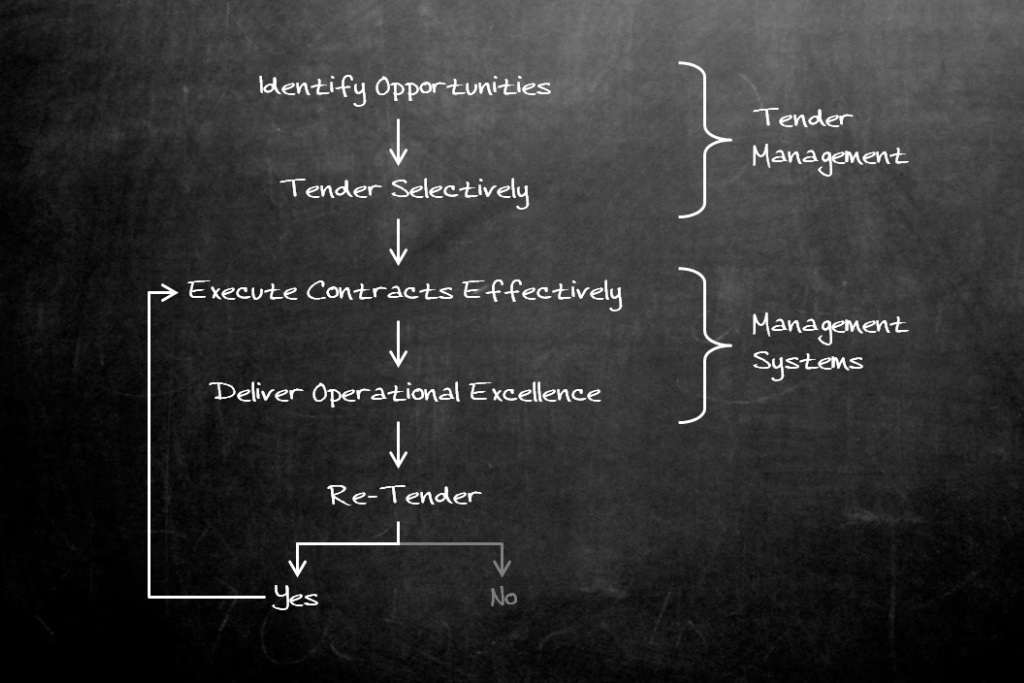Our business lifecycle governance process formalises our approach to value creation and managing the associated risks. It helps us to:
- determine what market we want to be in
- tender successfully for contracts that add most value
- effectively deliver these contracts to deliver this value
- retain and develop these contracts
Identify Opportunities
Firstly we look for markets that:
- offer multiple contracts and good growth
- provide appropriate margins and cash-flow
- allow us to differentiate ourselves from the competition
- offer the opportunities to build long term relationships
Once we know the market is attractive, we identify opportunities to pursue. We then evaluate the quality of each opportunity, including:
- our understanding of the customer’s business and vision
- their funding for the project, and
- how likely they are to procure.
For further information on our selection criteria, see the previous Blog Post.
Tender Selectively
Bidding can be expensive and take many months, so we only bid for opportunities that meet our criteria and where we have a strong chance of winning.
The bidding stage has numerous steps, from our pre-qualification, to being shortlisted, to our final tender. During the process, we develop a detailed solution for the customer and test it thoroughly. At every step, we review the opportunity and confirm that we want to proceed.
Once the customer selects us, the final step is to negotiate and sign the contract.
Execute Contracts Effectively
Effectively delivering a new contract is absolutely vital. As we implement the solution we designed during the tender process, we ensure that the right planning and controls are in place to effectively roll out the contract.
We design the necessary management, quality and IT systems to ensure the key objectives of the contract are delivered. We transfer knowledge from the design team to the contract management team, and continue to strengthen our client and stakeholder relationships.
Deliver Operational Excellence
We aim to deliver operational excellence and continual improvement.
Passing responsibility to our contract management team allows them to innovate and respond to our customers’ needs. It also makes our business scalable, enabling us to manage a growing contract portfolio.
Working in the right way helps us to build long-term relationships. This often leads to the customer expanding our contract during it's life, which is important for our growth. It also positions us to win the contract at rebid.
Re-Tender
Our long-term relationships and quality of service generally place us in a strong position when contracts are re-tendered. Given our stringent selection criteria, we will almost always re-tender and aim to retain in excess of 95% of contracts.
We approach the re-tender as if it were a new contract, designing ways to deliver even greater quality and productivity. Often the customer requests more services over a longer term, so a rebid can be considerably larger than the original contract.
Once we have secured the rebid, we return to the contract delivery phase, bedding-in our innovations and any new services we have taken on.
 Blackstar
Blackstar

